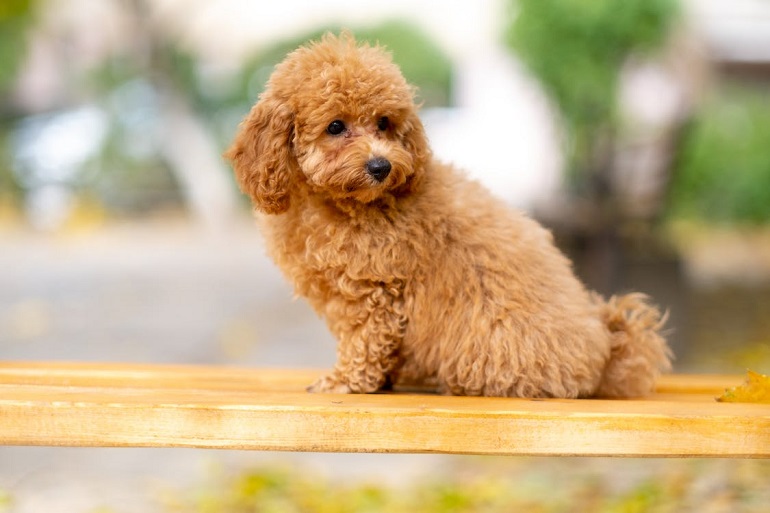Do you know which dog breed is ranked number one in popularity? It’s neither the golden retriever nor the german shepherd. Instead, it’s the toy poodle! These cute, energetic, and tiny fur balls are adorable enough to make everyone fall in love with them.
Considering their size, one may think of these miniature poodles as toy dogs or foo-foo dogs that you should have only for warm vibes and cuddles, but that’s not true!
You must be surprised to know that these poodles are known as one of the best hunting dogs in Europe since they are super intelligent, highly trainable, and can compete bravely against any other tall canine cousin.
So today, we are going to debunk all the stereotypes about toy poodles by discussing their history, breed, appearance, health, temperament, and fun facts.
Keep reading the article and find out why poodle enthusiasts are the proudest breed owners. Shall we begin?
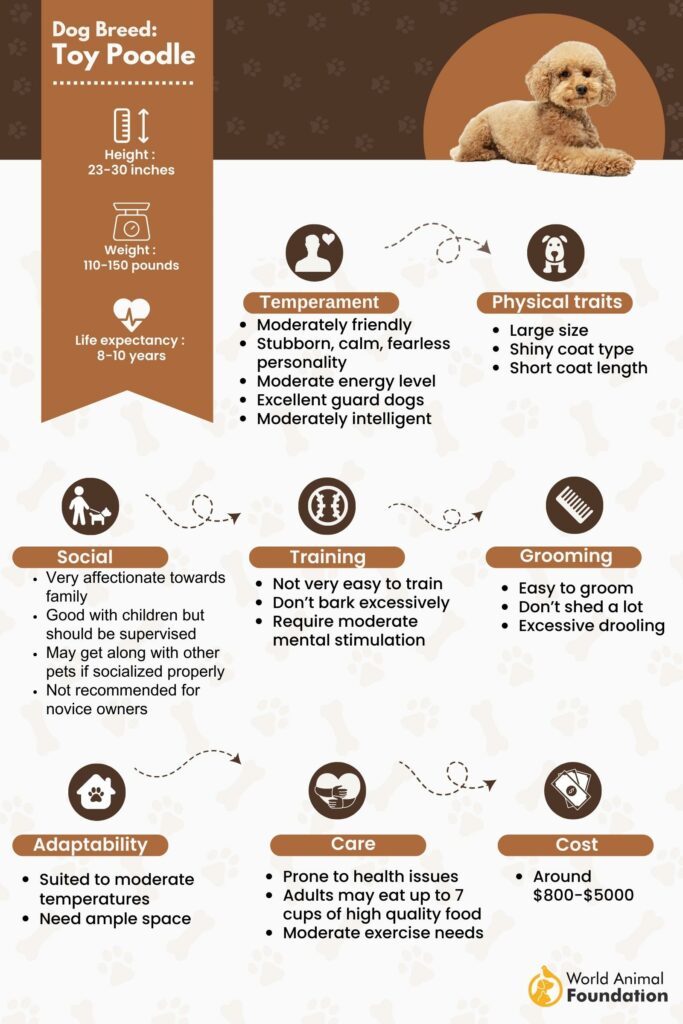
About the Breed
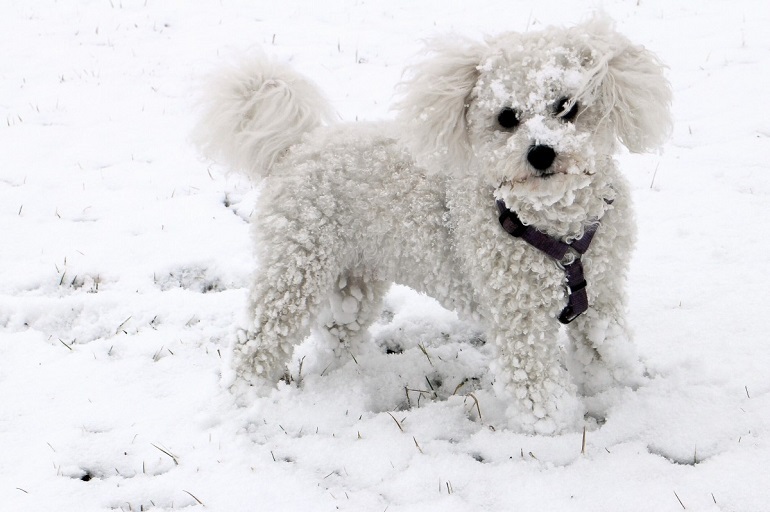
As the name implies, these dogs fall in the category of toy breed due to their extremely small size. However, even with this small size, these toy poodles have great personalities.
Originally, miniature and toy poodles were made by breeding small poodles instead of breeding poodles with toy breeds. Many people believe that poodles are the result of the breeding of various European water canines including Russian, French, German, Spanish, Hungarian, and Portuguese water dogs.
Depending upon the toy poodle mixes, you may get to see a wide variety of sizes in the same breed, from a standard poodle to a miniature poodle.
At first glance, one may easily associate these well-primed-up lap dogs with a life of luxuries and leisure, but that’s not true. The breed is originally a water retriever by nature and, therefore, ranked as the best duck dog.
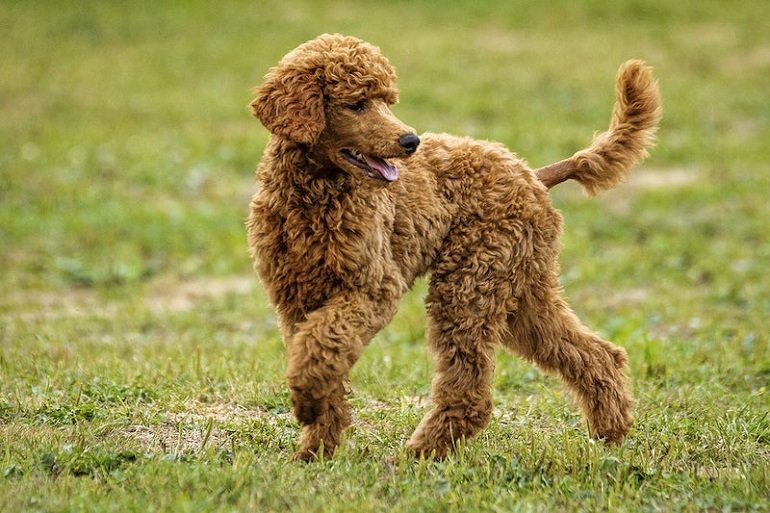
In fact, their English name, poodle, is derived from the German word pudelin or pudel meaning splashing the water. Whereas in French, these toy poodles have the name Caniche, which means duck dog.
Their sole purpose is to please their owner either by completing a hunting mission or doing hilarious things. The best thing about this toy poodle dog breed is that they make up for great apartment dwellers and are super social simultaneously.
Training toy poodles is super easy, which also makes them the perfect choice as a family pet and the best breed for people with a busy lifestyle. And most importantly, they don’t need your all-time attention to stay happy.
Yes, they crave cuddles and companionship, but these toy poodle puppies also understand and get settled according to the lifestyle of their owners.
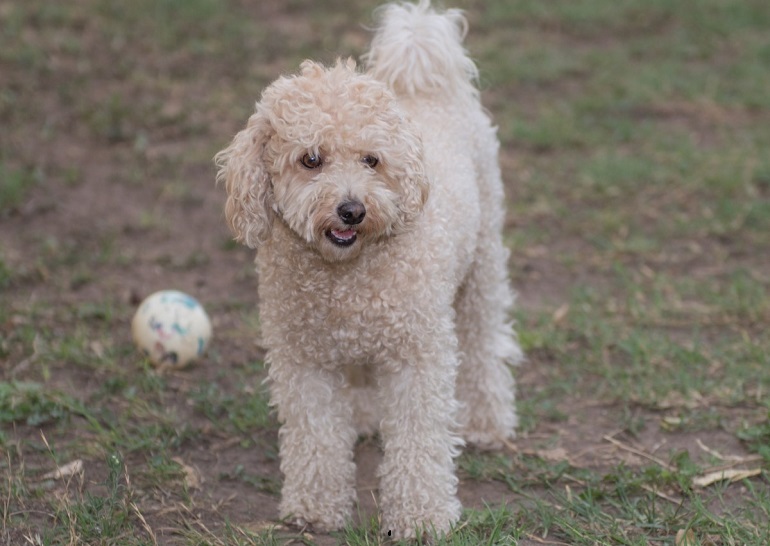
They find enjoyment in keeping themselves busy when the poodle’s parents are not around (remember that famous Tik-Tok star poodle puppy, biscuit?).
However, like all the other dogs, these also need to stay busy; otherwise, they might get subjected to huge mental and physical destruction. So you better not leave them for long hours or at least assign these small dogs a task before heading to the office.
Luckily, with their many talents, toy poodles love to do every task and indulge in all sorts of sports activities because of their super athletic natures.
Whether it’s dog diving, obedience training, tracking, or duck hunting, these active dogs never fail to amaze you with their versatile and regal attitude.
Toy Poodles History
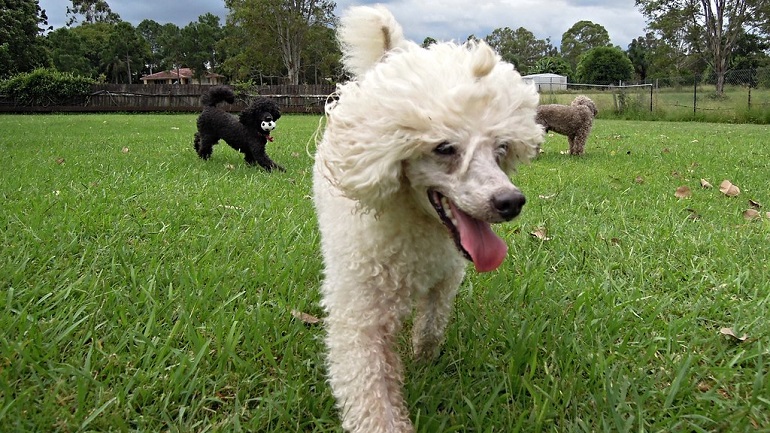
Although poodles have been around for more than four hundred years, toy puddles are quite newer than standard poodles.
Many people believe that miniature poodles emerged soon after the original German poodles, but we still think they were not there before the 1400s.
Unlike the original German poodles, which were bred to retrieve fowls and ducks from water bodies, toy, and miniature poodles were designed for a different job: to perform in circuses and streets and to be adopted as pure family dogs.
Pet owners, especially the French, use these working dogs to search out for mushrooms and truffles in the woods, which make up a super essential ingredient in most French cuisine.
That’s another reason why the poodle is the national dog of France, and standard poodles are commonly referred to as French poodles.
Besides, gypsies and circus organizers shape the fur of poodles with fancy costumes & poodle clips to make them look more presentable and stage-appealing.
Since the fifteenth and sixteenth centuries, poodles were dogs only possessed by rich and famous people, whereas, in the eighteenth and nineteenth centuries, toy poodle puppies became a status symbol among the wealthy and merchant class.
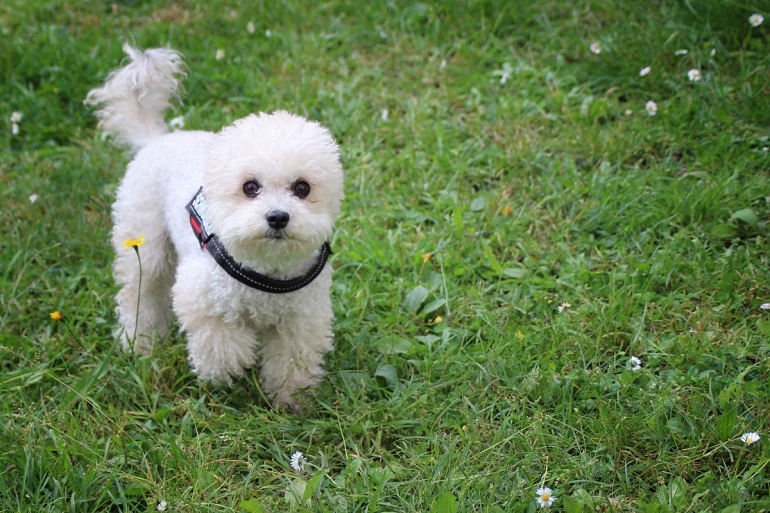
Due to this very reason, you may easily find famous ancient art pieces featuring toy puddles, including French artworks, courts of aristocracy, and the paintings of the world-renowned German painter Albrecht Durer. Even today, after hundreds of years, the royalty and aristocracy associated with this dog breed are intact.
British Kennel Poodle Club registered its very first poodle puppy in 1874, whereas the American Kennel Club registered its very first poodle pup in 1886.
Until 1950, toy poodles were extremely rare dog breeds in the US, but after World War 2, a fair increase in their number and demand was seen, making them the most popular breeds for more than two decades.
Facts about Toy Poodles
Now that you have read about the breed and history of toy poodles, let’s have a quick look at some fun facts about these cute little dog breeds.
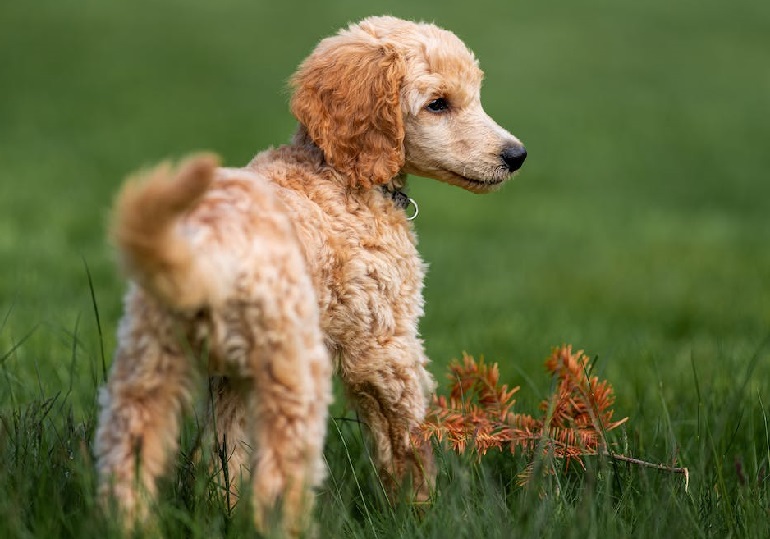
- To participate in competitions as show dogs, each poodle must have to stick to specific hairstyles – following the rules about where their furry pom-poms and puffs will go. Adult poodles may choose only one of the three hairstyles, including the English saddle, the modified continental clip, and the general continental clip.
- Poodles are one of those dog breeds that contain hair, not fur. If you don’t know the difference between the two, let us explain. Fur refers to hairy growth, which elongates to a special length and then sheds off, whereas hair grows to an infinite length without shedding.
- Due to their unmatchable agility and intelligence, this intelligent dog breed is serving mankind as service dogs. Some interesting jobs toy poodles are doing these days are assisting medically disabled people and serving as lifeguards & therapy dogs.
- Several icons owned poodles, including Elvis Presley, Elizabeth Taylor, Lucille Ball, Jackie Kennedy, Katherine Hepburn, Walt Disney, and Marilyn Monroe.
- Since poodles don’t shed fur, they are perfect for people with allergies.
Toy Poodles Appearance
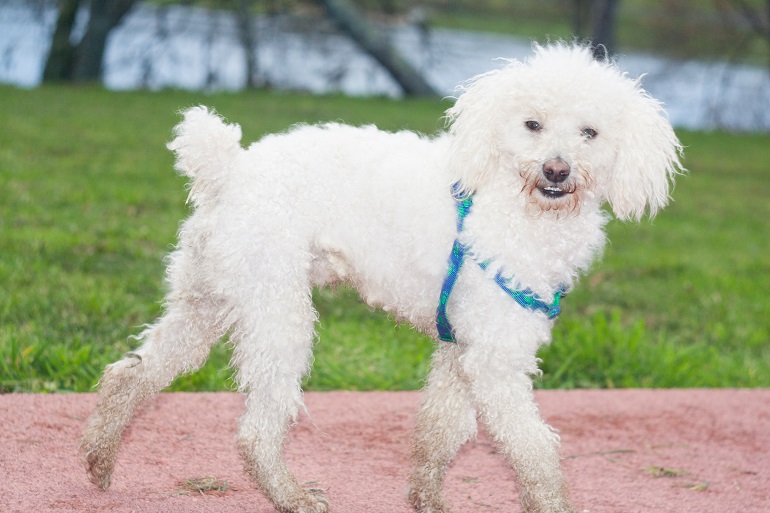
Based on their size, poodles are divided into three groups: miniature, toy, and standard. All of these poodle types look nearly the same, with the same physical attributes (dark eyes, ears hanging close to the skull, and black nose), coat, behavior, markings, and texture.
All these poodles look extremely fragile with their long, curled coats and delicate moose. The only difference is their height and weight. Let’s go through the appearance of these poodles closely:
Size
Wondering how big a toy poodle gets? Well, among the three categories, the smallest poodle is the toy poodle, with a size of up to ten inches. After the toy poodles, miniature poodle puppies come, which may stand anywhere around eleven to fifteen inches tall.
Lastly, the standard poodles are the tallest of all and may stand anywhere from fifteen inches to twenty-two inches tall.
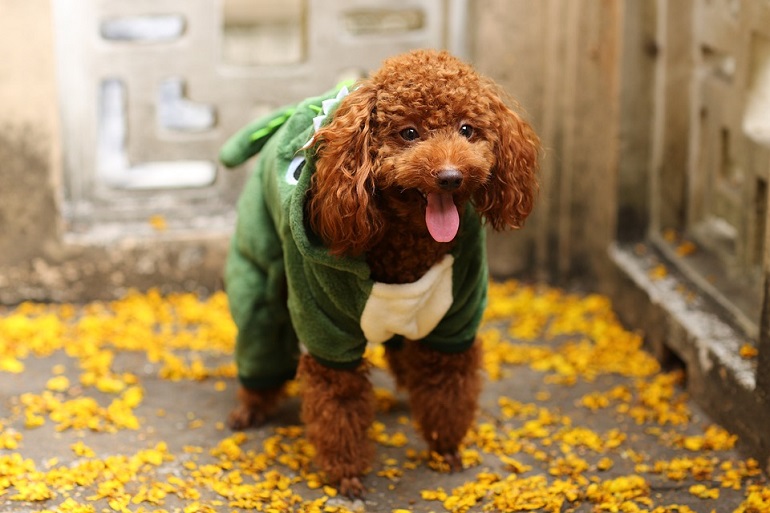
Speaking precisely of toy poodle size, the male poodle can grow up to seven to ten inches maximum. On the other hand, female toy poodles tend to grow only up to six to nine inches tall.
Weight
The weight of the poodles may vary depending on their size. For example, a toy poodle may weigh anywhere around 6-9 pounds, whereas a miniature poodle may weigh around 15-17 pounds. The standard French poodle, on the other hand, is the heaviest of all, as it can weigh around 45-70 pounds.
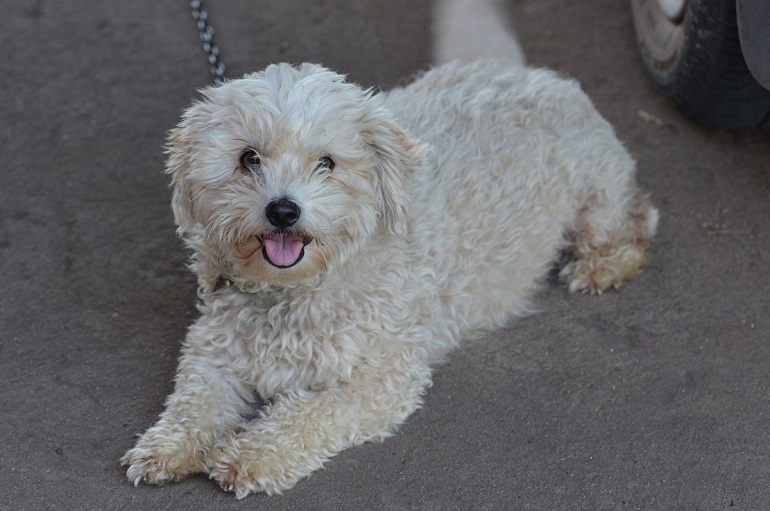
Speaking precisely of toy poodles, male toy poodles may weigh around four to six pounds, whereas female toy poodles weigh around three to five pounds.
Coat
The coat texture of all the poodles is nearly the same, with long, curly hair that needs to be groomed every four to six weeks. Luckily, these poodles don’t shed coats, which means there is no chance of allergies or fur sticking to your shirt after every cuddle session.
However, one thing that you should know before owning a toy poodle is that their coats are highly prone to matting, so you better trim it regularly and sort it out using a puppy clip or pet clip.
Otherwise, your tiny poodle won’t only have to undergo painful untangling but also might suffer from fatal infections.
Coat Color
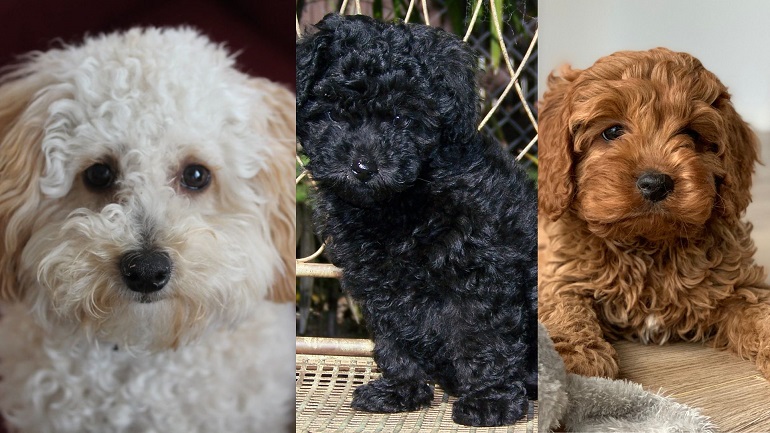
When it comes to coat colors, the poodle varieties are endless. From black to grey to blue to the brown and white toy poodle, choosing one can be seriously intimidating. Speaking of the most popular poodle coats, red and black ones are considered the supreme options.
Indeed, the stunning array of poodle coat colors is a sight to behold, and it’s no wonder our poodle shirts fly off the shelves quickly – they celebrate the breed’s magnificent beauty that poodle owners know and love.
Toy Poodle Temperament and Personality
Speaking of the personality and temperament of poodle puppies, they are super friendly, active, and superbly trainable. Since they are famously known as companion dogs, they crave companionship and develop lonesome anxiety very quickly.
As a result of this separation anxiety, these toy poodles can turn your entire house upside down by chewing out the couch and digging out the pot plants.
Although you can leave them alone for a short period, as stated before, at least assign them some sort of activity to ensure they are busy enough not to feel your absence. And if you don’t find any activity for your small dog, the best you can do for them is to hire a pet sitter.
As a watchdog, toy poodles work well since they can hear even the slightest sound and bark their ass off to alert you of invaders.
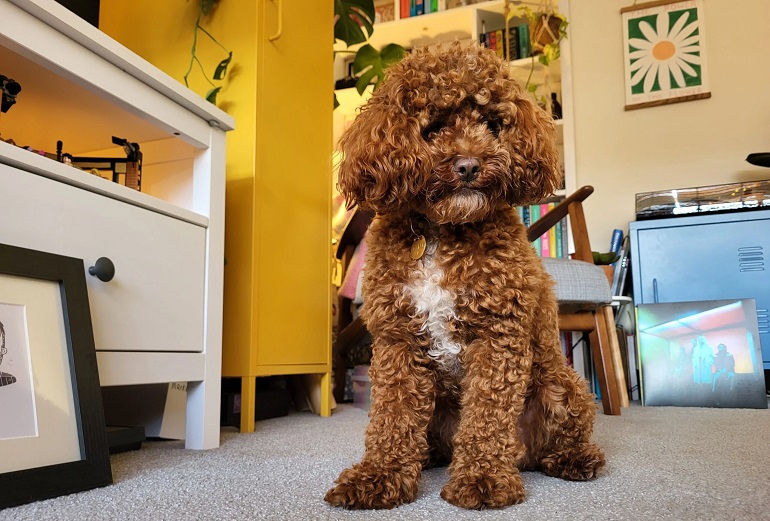
Also, toy poodles are highly protective of their family and territory, so it doesn’t matter what their size is; this tiny furball will give a tough time to burglars.
However, this loud and excessive barking also comes out as a problem for dog owners sometimes, but since they are super smart, a little training will be sufficient to make them behave correctly.
Remember that toy poodles love to gain appreciation, so the more you appreciate their good behavior, the more they’ll behave well.
Also, don’t forget to dissipate their mental and physical energy through regular strolls and exercises. Last but not least, you need to remember that toy breed standard poodles are intelligent not only to learn good habits but also bad ones.
They don’t forget anything they watch their parents do, so as a responsible breeder, watch your behavior too, around your little poodle.
Toy Poodle Health and Care
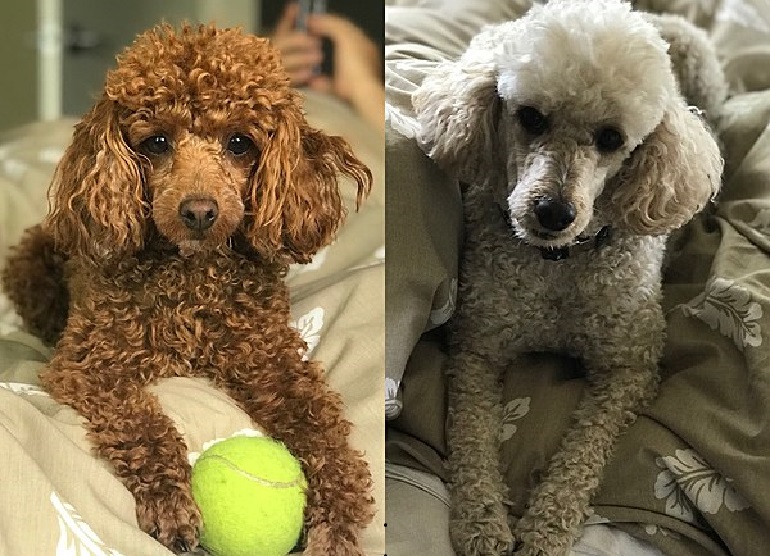
The life expectancy in toy poodles is twelve to fifteen years if they get proper diet and exercise. Poodles, due to being featherlight and having small stature, don’t develop terrible arthritic problems, but still, there are some diseases to which they are prone.
Some of these severe health problems are genetic, whereas some other arises afterward due to improper care and negligence. To discard the chance of genetic disorders, make sure you are purchasing your pup from a reputable breeder.
Also, go through the health clearance reports of the poodle’s parents to make sure the baby hasn’t inherited any health issues. Some common disorders which are found in poodles are as follows.
Gastric Dilation Volvulus
It’s one of the most fatal digestive problems that can arise in poodles. In this condition, too much gas is accumulated in your dog’s stomach, making him feel bloated and uneasy.
Gastric dilation volvulus is generally caused by eating way too quickly, drinking water in gulps, or having a large meal one time a day. The poor pup can’t vomit, belch, or even fart to get rid of this gaseous tension which in turn lowers his blood pressure. If timely medical attention is not provided, your poodle may die.
Progressive Retinal Atrophy
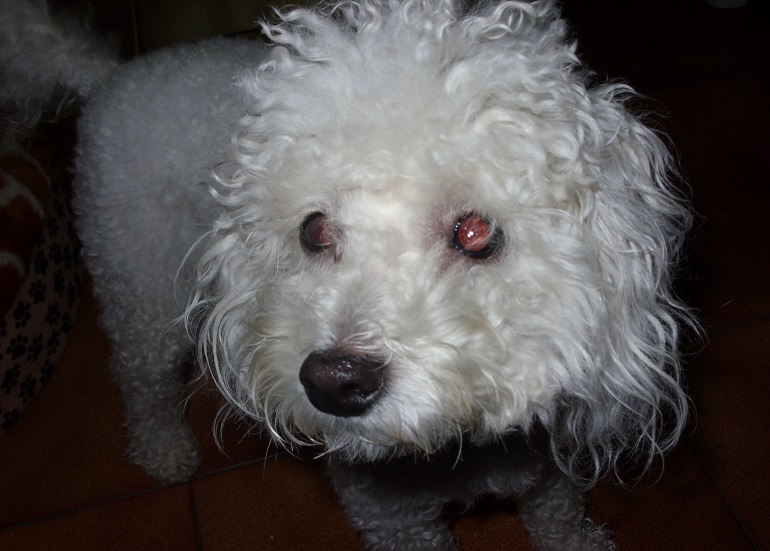
Progressive retinal atrophy is an eye condition in which the retina deteriorates day by day. During the initial stage of this disorder, night vision begins to be lost. If not treated, your pup may develop day blindness too, making him completely blind.
Besides progressive retinal atrophy, distichiasis is also a commonly inherited toy poodle disease in which hair grows at the internal side of the eyelid.
This condition might be too painful for your small pooch since the internal hair growth not only hinders the vision but also induces friction, causing chronic retinal pain and corneal ulcer.
The best treatment plan to solve this medical condition is the prognosis and surgical removal of hair.
Hip Dysplasia
Hip dysplasia is a common genetic condition in which the thigh ligaments and hip sockets are poorly attached, causing severe pain and soreness in movement. Sometimes, hip dysplasia is also caused by way too strenuous exercises, high chlorine diet, abnormally fast growth, and being overweight.
Chiropractic treatments may treat this condition to a great extent, but for complete treatment, your pet needs to undergo proper medication, supplements, and sometimes surgery.
Skin Diseases
Sebaceous adenitis is quite common in toy poodles, in which the hair begins to fade in the form of bare patches, and the skin of your poodle turns super dry and scaly. The exact cause of this skin condition is unknown, and it takes quite a long time to get better completely.
Generally, the vet recommends changing the diet by adding more fatty acid supplements to it. Also, they recommend changing the soaps and shampoo so it won’t feel itchy on your dog’s infected skin.
Besides sebaceous adenitis, toy poodles may also develop skin cancer, which originates at their toe-bed. The cancerous region often seems to be in the form of a protruded lump or bulb. If the doctors confirm it’s a cancerous bulb, the toenail needs to be surgically removed or amputated immediately to stop further cancer spread.
How to Take Care of Your Toy Poodle?
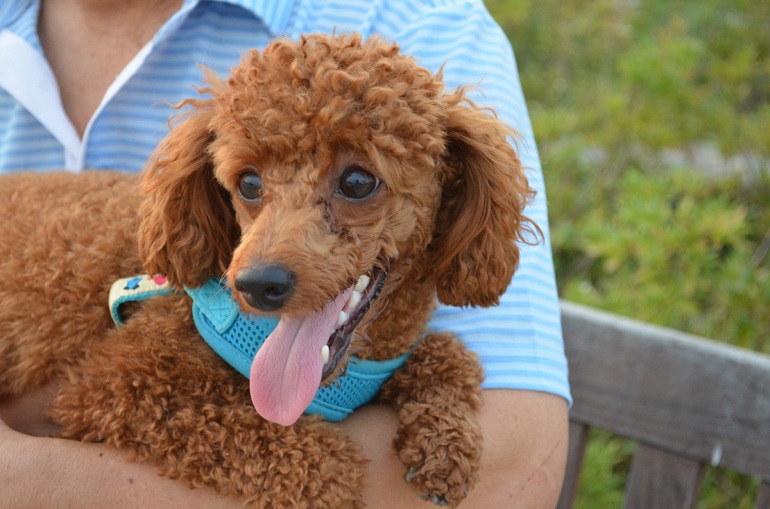
Despite looking extremely fragile and being suspected of developing so many different health ailments, taking care of your toy poodle is not too difficult a task. You don’t need to go the extra mile since general care and maintenance will be sufficient.
And what falls under general care? Well, make sure your dog is getting a healthy diet. For this purpose, search thoroughly for the best dog food around and avoid the ones with high amounts of preservatives or artificial ingredients.
Since your toy poodle is super active and energetic, he needs a diet full of calories, protein, and fiber. Vegetables and real meat make a good choice for poodle feed since they offer a natural source of nutrition without so many fillers.
To prevent skin and coat conditions, brush your poodle daily and trim the excessive hair every month. Other things that should be added to the lifestyle of your healthy puppies are Brushing and grooming.
The poodle coats tend to be thick, long, and curly, which means they can be matted super quickly on wearing a wrong collar or by cuddling a little more extra. Therefore, to save yourself and your toy poodle from the hassle of painful detangling, brush their coats daily, from root to end.
Usually, a fine brush with narrow and sturdy nails is preferred to prevent matting. However, if your poodle has somehow ended up making knots in his coat, we’d recommend trimming the hair super short.
Conclusion
Smart, playful, active, protective, tiny, and most importantly, super cute, all these qualities can’t be found in one dog breed other than a toy poodle. Just make sure you are purchasing your pup from reputable toy poodle breeders so you can get the exact health information about your pet-to-be.
After getting your healthy little poodle, just take care of his diet and exercise needs as you do for other dogs, and you’d need to do nothing more.
Whether you were looking for ways to become a better parent or were confused about owning a toy poodle, we really hope that you’ll find this article informative and helpful. If you have any questions related to this cutest dog breed, feel free to drop them in the comment section!


